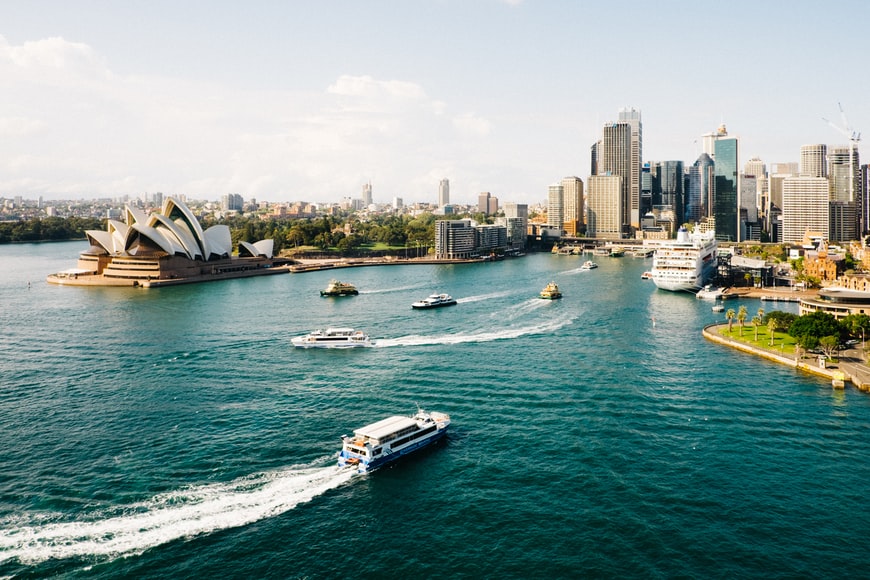10+ Useful Malayalam Words To Learn Before Traveling To Kerala | Kerala Travel Guide
BY Abdul Aziz Oct 11, 2021
If you are planning a vacation with your family in the monsoons, there can’t be a better place than Kerala. It is one of the best tourist attraction centers all over the world. Known as God’s own country, Kerala has several picturesque sites that are perfect backdrops for selfies. No traveler will go to this place and fail to get a selfie for himself. Add to that monsoon rain, and you are sure to have a once-in-a-lifetime experience. A few hours of rain give way to soft sunshine with the temperature never crossing the 30 degrees Celsius mark. Therefore you can be sure of enjoying the beauty of nature when you choose to visit Kerala. When traveling to Kerala for vacation, booking a tour package is not enough for smooth sailing. You have to do a lot of research to find what will work best for you. In Kerala, many locals are not well-versed in English and Hindi, which often results in communication problems. You must learn a few words in the regional language – Malayalam. You can get a reliable online tutor to help you go through this training session. After all, it’s all about doing as the locals do. Here’s a list of few Malayalam words every tourist must know when traveling to Kerala. These tips will make sure that you have a comfortable stay in Kerala. 10 Useful Malayalam Words To Learn Before Traveling To Kerala Here is the list of 10 famous Malayalam words and phrases you can learn before going to Kerala. 1. Namaskaram One of the foremost words to learn in any language is the word used to greet others. In Malayalam, you say “namaskaram” whenever you meet someone. It means “hello” in the Kerala language. Namaskaram should be at the top of your list of Kerala language words because you will use it whenever you encounter someone. It will help to establish a sense of familiarity. 2. Sukhamaano: Malayalam Words To Learn Before Traveling To Kerala It is also crucial to know the meaning of this word while traveling to Kerala. “Sukhamaano?” is Malayalam for “how are you?” So, to know how someone is doing, say Sukhamaano? When asked the same by someone, reply with “enikku sukhamaanu,” which means “I’m fine.” It is good to learn these basic terms so that you can have a good time interacting with the locals. 3. Dayavu Cheythu or Dayavayi “Dayavu cheythu” or “dayavayi” means “please” in English. It’s an important word to know as you may have to use it often when traveling. You will use it when you want to excuse yourself or remain cautious while dealing with other people. 4. Nanni “Nanni,” pronounced as nan-n穩, is Malayalam of “thank you”. It’s a useful word to have in your vocabulary as you may often need help or assistance from locals during the trip. You can also use it to show gratitude after you receive a gesture from the local people. You will hear this word repeatedly as you interact with the locals. 5. Enikku Vishakunnu If you are hungry and have nothing to eat in your bag. Reach out to locals and say “enikku vishakunnu”, it is Malaylam for “I am hungry.” You can be sure that the locals will provide you with some refreshments. This is one of the popular Malayalam phrases for travel and is essential to fill your belly. 6. Ningalude Peru Enthaanu To strike a conversation with locals and know their name, say “ningalude peru enthaanu”, its Malayalam phrase for “what is your name?” If you are asked the same, reply with “ente Peru” and mention your name, Malayalam for “My name is.” You can communicate with the locals and tell them your name without a problem. 7. Njaan Ningalude Phone Upayogichotte You can face a situation where your phone has a low battery, and you need to make an urgent call. You would require someone else to help you with his phone. This word will come in handy when you are facing such a situation. To request them to use their phone, say “Njaan Ningalude Phone Upayogichotte,” which means “Can I use your phone?” You will be able to get the assistance that you deserve within a short period. The secret is knowing how to use some of these Malayalam phrases for travel. 8. Pinneedu Kaananam Thank the locals for their help and bid them goodbye by saying “pinneedu kaananam.” It is a word that you will use when exiting a particular destination. It shows that you are thankful for your encounter with the locals. Use this phrase when bidding farewell to the locals of Kerala. 9. Engene Enikku _________ Etham? To find your way when you are lost, just ask “engene enikku _________ etham?” filling in space where you want to go, hotel, and restaurant, bus or railway station. It is Malayalam of “how do I get to _____?” It is one of the most important terminologies especially if you are strange in the city. It will help you to get back to your destination within no time. 10. Ithinu Enthu Vila? “Ithinu enthu vila?” is a useful phrase when shopping for local goodies. It will help you know the price of commodities. It is Malayalam for “how much is this?” Learning this phrase as one of the best Malayalam words will create a sense of familiarity. Further, you can bargain for every buy and strike a good deal. Cute Malayam Words To Learn Before Traveling To Kerala Learning this phrase as one of the best Malayalam words will create a sense of familiarity. Further, you can bargain for every buy and strike a good deal. Cute Malayam Words To Learn Before Traveling To Kerala So, you have learned the basics. Now, you can try some really cute Malayam words to learn before traveling to Kerala. 11. Valare Upakaram Valare Upakaram, one of the easiest Malayalam new words to learn, means “Thanks a Lot.” So, by uttering this phrase, you express your gratitude, which is important with someone helping you in a new land. 12. Suprabhaatham Suprabhaatham is very similar to Suprabhaat, which means Good Morning in Malayam. It’s a must-learn phrase, as you cannot avoid uttering this when you meet someone at the beginning of your day. Maintain positive body language and a happy expression when greeting someone, Suprabhaatham. 13. Shubha Raathri Shubha Raathri is an easy Malayam phrase to bid someone “Good Night.” You can remember this phrase to create an impression on your local guide or tour operator as you end your activities for the day. Further, Shubha Raathri is similar to “Shubh Ratri” in Hindi. However, there is a difference in the diction, and you must try to adapt it from videos or tutorials. 14. Sahaayikkoo Sahaayikkoo should be on your list of easy Malayam words to learn because it means help. As a traveler, you will need assistance in many matters in a new city. Further, this word is easy to pronounce and similar to its Hindi counterpart, “Sahaayta.” 15. Kandathil Santhosham Kandathil Santhosham is one of the most famous Malayalam phrases meaning “Glad to Meet You.” This is a useful phrase as you will make new acquaintances and friends at the new place. Uttering this phrase will bring a smile to their lips. Trust me! This phrase is a great conversation starter; you can even use it for formal meetings. Malayalam Words To Learn: Taking Care Of Your Communication In addition to these useful Malayam words, you must know the directions and initial numbers in Malayalam. Knowing Kerala essential words and phrases can help you communicate with locals, and understanding what they say can prove extremely useful during travel. The Malayam words to learn will take care of communication. So, book a Kerala tour package for a comfortable and hassle-free trip. Whether in Delhi, Mumbai, or Ahmedabad, you can easily find several reputable tour operators who can help you with the travel package. Did You Know? The traveling meaning in Malayalam is Yaathra Cheyyunnu. Some other Malayalam names for tour are:1. Yatra2. Pariyatanam3. Deshasancharam4. Sancharam You will discover you will have an easy time interacting with these locals. You can employ the services of an online tutor to get more insights into Malayalam words to learn. How To Improve Your Vocabulary Of Malayalam Basic Words | A Tour And Travel Note Now, you have learned a few Malayalam phrases that will help you during a trip to Kerala. However, if you want to learn more Kerala language words, you can try the following practices. Read Books And Newspapers The first step toward increasing the Malayalam words list is reading Malayalam books and newspapers. You can even read Malayalam travel blogs online to learn famous Malayalam words and indulge in the pleasure of traveling at the same time. Interact With Native Malayalam Speakers Conversing with native Malayalam speakers is the best way to learn Malayalam language phrases. It’s great if you have friends or family members speaking the language. Otherwise, you can join in-person or virtual language exchange groups. You will find many beginners and native speakers there helping you to learn basic Malayalam words. Use Applications Teaching Malayalam Words For Beginners You can install apps like Ling Learn Malayalam Language or Learn Malayalam Language to learn basic Malayalam sentences. These apps have fun activities and assignments to learn common Malayalam phrases. Further, by using these apps, you can improve your speaking power, vocabulary, grammar, and listening skills. You can even use the Shabdkosh app available on Google Play and check out Malayalam words to learn in the English Malayalam dictionary. Find A Tutor For Learning Malayalam Words If you want to learn good Malayalam words, you must hire a language tutor. The tutor will help you one-on-one to learn Kerala basic words with a customized plan. You can even learn cute Malayalam words from an online tutor. Read More : Top 10 Famous Wonders Of India Things To Do In Maryland – Free Places To Visit In Maryland The Easy Way To Travel In India Best Time To Visit New York – Know All About New York Weather













